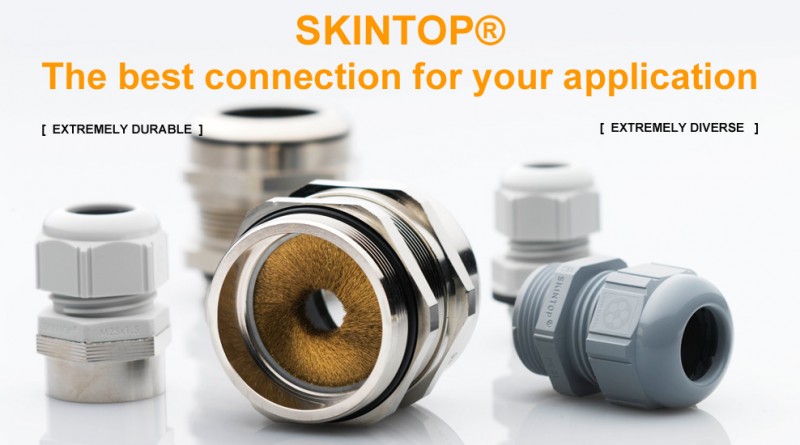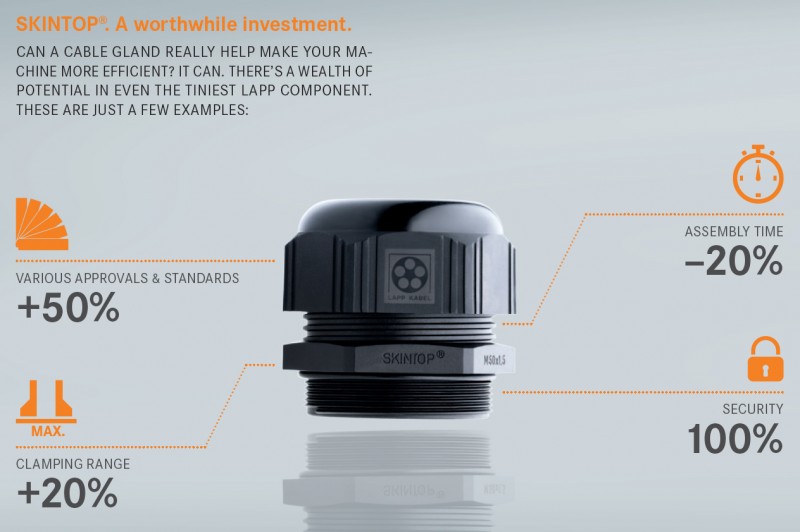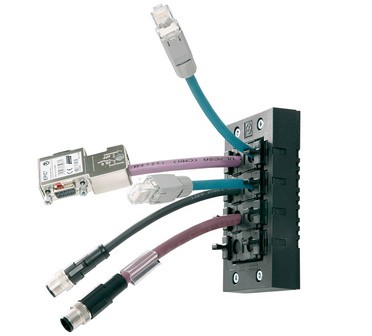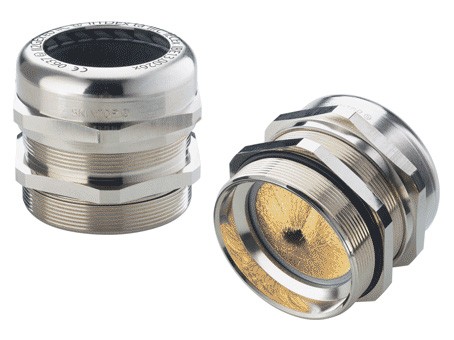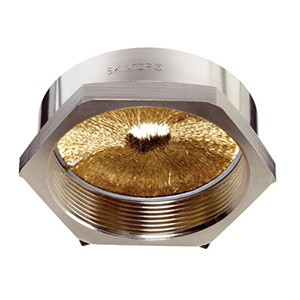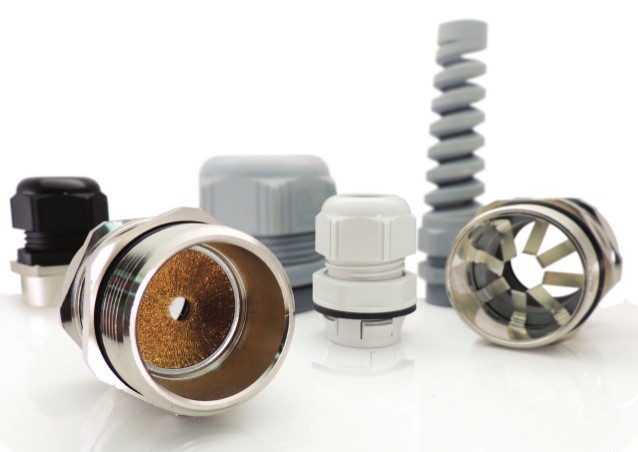Plastic or metal one, with a metric or a PG thread, operating temperature range, IP rating, EMC shielding, strain relief, bend-crack cable protection, ... those are some of the most frequent questions you have to answer when selecting a gland suitable for your application. As it typically goes in this industry, there are applications where a “common standard gland” is sufficient and the ones where almost every parameter matters (e.g. in explosive environment). A gland has basically 2 main functions: to seal the throughput of a cable through a device panel and also to mechanically fix the cable to eliminate cable movement or turning in a gland. Additional but often important requirement is to minimize pressure on a cable and the protection against cable damage at frequent cable movement. All usual plastic or metal cable glands are designed in a way that their body has an outer thread on a side mounted into a device panel. This thread is either metric (M12, M16,...) or PG (PG9, PG11, ...) according to older German norm DIN 46320 (withdrawn to 31.12.1999). PG glands were and still are very widely spread, but for new applications it is highly recommended to use only metric thread glands. Metric glands are the most perspective and also an offer in this segment is the richest, while the offer in PG segment is gradually decreasing. The main difference between PG and M threads is in the standardized dimensions and thread height (pitch). Different sizes of PG/M threads are reflected in various cable diameters, which these glands are able to cover. It is comprehensively illustrated in the attached table, as well as in the document Lapp T23 – cable glands that is talking about the replacement of PG/metric glands.
A benefit of metric glands is that most frequently used sizes M12 to M32 cover wider range of cable diameters than PG glands –for example, M25 gland can replace PG13,5 in upper range, PG16 in a full range and a PG21 in almost full range.
Small minus of metric glands is that for example the smallest standard metric gland - M12 is for cables from 3.5 mm and above, while the smallest PG7 can fix cables from 2.5 mm above. However, a simple solution exists – so-called reduced glands, i.e. SKINTOP STR-M having thicker sealings and thus they are able to clamp substantially thinner cables (for example M12 for cables 1-5mm).
If you don´t work with cable glands catalogues on a daily basis, you might have thought so far that for each single cable it´s necessary to use a single separate gland… But it´s not like that :). On the market there are also standard glands having their sealing molded with several openings (or also separate sealings with multiple openings are available) which is a very useful solution saving space on a device panel, suitable mainly for thinner cables.
Common universal glands, which can be found also in our offer are supplied with a fastening nut – advantageous mainly when mounting on a thin panel, where it´s not possible to cut threads. However, many glands are usually supplied without a nut, as they are supposed to be mounted only by screwing into a panel. In any case, it´s always possible to buy plastic and metal nuts separately. Metal nuts are even available with cutting edges for a reliable electrical contact even in metal boxes with a surface treated with enamel colour etc.
Similarly like everywhere where screws and nuts are used, we should at least “roughly” keep the recommended fastening moments, as described in the Lapp T21 document.
“EMC“ and explosive environment glands are a separate chapter where we usually require a perfect contact of a metal shielding (screening) of a cable with a gland, and then also with a device panel itself.
Besides standard cable glands we can supply any glands from the Lapp Kabel portfolio upon request – mainly from the SKINTOP® and SKINDICHT® product range.
In case of interest, please contact us at sales@soselectronic.com.
Do you like our articles? Do not miss any of them! You do not have to worry about anything, we will arrange delivery to you.













